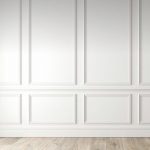The best way to clean your chopping boards naturally
Keeping those wooden chopping boards clean.
Cleaning chopping boards naturally is an essential part of maintaining a safe and hygienic kitchen. Chopping boards can harbour harmful bacteria if not cleaned properly. While there are many commercial cleaning products available, using natural methods can be just as effective without the use of harsh chemicals.
In this blog, we’ll explore the best ways to naturally clean your chopping boards, covering various types of chopping boards and different cleaning techniques.
Let’s dive in!
Table of Contents:
- Introduction
- Why it’s important to clean chopping boards
- Benefits of natural cleaning methods
- Types of Chopping Boards
- Wooden chopping boards
- Plastic chopping boards
- Bamboo chopping boards
- Glass chopping boards
- Tools and Ingredients for Natural Cleaning
- Vinegar
- Baking soda
- Lemon
- Salt
- Essential oils
- Dish soap
- Scrub brushes or sponges
- Micro fibre cloths
- Boiling water
- General Chopping Board Cleaning Guidelines
- Daily cleaning routine
- Deep cleaning routine
- Seasoning wooden chopping boards
- Natural Cleaning Methods
- Method 1: Vinegar and Baking Soda
- Method 2: Lemon and Salt
- Method 3: Essential Oils
- Method 4: Boiling Water
- Cleaning Specific Chopping Board Types
- Cleaning Wooden Chopping Boards
- Removing stains and odours
- Seasoning and maintaining
- Cleaning Plastic Chopping Boards
- Dealing with knife marks
- Cleaning Bamboo Chopping Boards
- Maintaining the bamboo surface
- Cleaning Glass Chopping Boards
- Cleaning Wooden Chopping Boards
- Preventing Cross-Contamination
- Proper food handling
- Using different boards for different foods
- Using colour-coded chopping boards
- Tips for Maintaining Chopping Board Hygiene
- Regular inspections
- Avoiding dishwasher use
- Replacing old or damaged boards
- Conclusion
- Recap of natural cleaning methods
- Importance of a clean chopping board
- Encouraging a healthier kitchen environment
- Additional Resources
- Links to further reading
- Recommended natural cleaning product brands
1. Introduction
Chopping boards are indispensable tools in any kitchen, but they can also be a breeding ground for harmful bacteria if not cleaned properly. Natural cleaning methods offer a safe and eco-friendly way to maintain the hygiene of your chopping boards. In this blog, we’ll guide you through various natural cleaning methods and provide tips for keeping your chopping boards in pristine condition.
2. Types of Chopping Boards
Before we delve into cleaning methods, let’s briefly explore the different types of chopping boards available:
Wooden Chopping Boards: These are classic and popular due to their durability and aesthetic appeal. However, they require special care to prevent warping and to maintain their longevity.
Plastic Chopping Boards: Known for their affordability and easy maintenance, plastic boards are commonly used in many kitchens. They are less porous than wood, making them less prone to absorbing odors and stains.
Bamboo Chopping Boards: Bamboo boards are an eco-friendly alternative to wood, known for their natural antimicrobial properties. They are harder than wood and resist knife marks effectively.
Glass Chopping Boards: Glass boards are non-porous and easy to clean, but they can be hard on knife edges and may break if dropped.
Each type of chopping board has its unique characteristics and requires specific care. Let’s move on to the tools and ingredients you’ll need for natural cleaning.
3. Tools and Ingredients for Natural Cleaning
Before you start cleaning your chopping boards naturally, gather the following tools and ingredients:
- Vinegar: White vinegar is a versatile natural cleaner with antibacterial properties.
- Baking soda: This abrasive cleaner is great for removing stains and odors.
- Lemon: Lemon juice is a natural disinfectant and imparts a fresh scent.
- Salt: Salt can be used as an abrasive cleaner in combination with other ingredients.
- Hydrogen peroxide: A mild disinfectant that can be used safely on chopping boards.
- Essential oils: Certain essential oils like tea tree or lavender can add antibacterial properties and pleasant scents.
- Dish soap: Mild dish soap can help break down grease and food residue.
- Scrub brushes or sponges: Choose non-abrasive brushes or sponges to avoid damaging the chopping board’s surface.
- Microfiber cloths: These are gentle on surfaces and effective at wiping away cleaning residues.
- Boiling water: Hot water is a natural sanitizer.
With your cleaning arsenal ready, let’s explore general chopping board cleaning guidelines.
4. General Chopping Board Cleaning Guidelines
Maintaining a clean chopping board is crucial for food safety. Here are some general cleaning guidelines to follow:
Daily Cleaning Routine:
- After each use, rinse the chopping board with warm water to remove food particles.
- Add a few drops of dish soap and scrub the board using a sponge or brush.
- Rinse thoroughly with hot water to remove soap residue.
- Allow the board to air dry upright to prevent moisture buildup.
Deep Cleaning Routine (at least once a month):
- Choose a natural cleaning method (covered in the next section) based on your chopping board type.
- Apply the cleaning solution to the board’s surface and scrub gently.
- Rinse with hot water to remove residue.
- Allow the board to air dry completely.
Seasoning Wooden Chopping Boards:
- Wooden chopping boards benefit from periodic seasoning to prevent cracking and maintain their integrity.
- Apply food-safe mineral oil or beeswax to the board’s surface, allowing it to soak in for several hours or overnight.
- Wipe off excess oil or wax with a clean cloth.
Now that we’ve established a cleaning routine, let’s dive into the natural cleaning methods you can use.
5. Natural Cleaning Methods
Method 1: Vinegar and Baking Soda
This combination is effective for cleaning and disinfecting chopping boards, especially wooden and plastic ones.
Ingredients:
- White vinegar
- Baking soda
- Water
- Dish soap
Instructions:
- Mix equal parts of white vinegar and water in a spray bottle.
- Spray the solution onto the chopping board’s surface.
- Sprinkle baking soda over the board.
- Add a few drops of dish soap for extra cleaning power.
- Use a scrub brush or sponge to gently scrub the surface.
- Rinse thoroughly with hot water.
- Allow the board to air dry upright.
Method 2: Lemon and Salt
Lemon and salt are natural cleaners with antibacterial properties, and they leave your chopping board smelling fresh.
Ingredients:
- Lemon
- Salt
Instructions:
- Cut a lemon in half.
- Sprinkle salt over the chopping board.
- Use the lemon halves to scrub the board’s surface, squeezing gently to release juice.
- Allow the mixture to sit for a few minutes.
- Scrub again, then rinse with hot water.
- Air dry the board.
Do you live in Brisbane and really feel the urge to start a fresh? Before investing your time in cleaning try our Spring Cleaning Service. Our Spring Cleaners can even help out by decluttering and organising your home to prep it for more Regular Cleaning Services.
If the thought is too much to bear call our Nest Cleaners and we would love to help!
BOOK NOW: Call 0438 079 996 OR Online Estimate with Nest Cleaning in Brisbane, Australia









